Xeriscape Landscaping Plants For The Arizona Desert Environment.
Pictures, Photos, Information, Descriptions,
Images, & Reviews.
Trees.
Morning Glory Tree.
Ipomoea arborescens.
We Are Proud Of Our SafeSurf Rating!
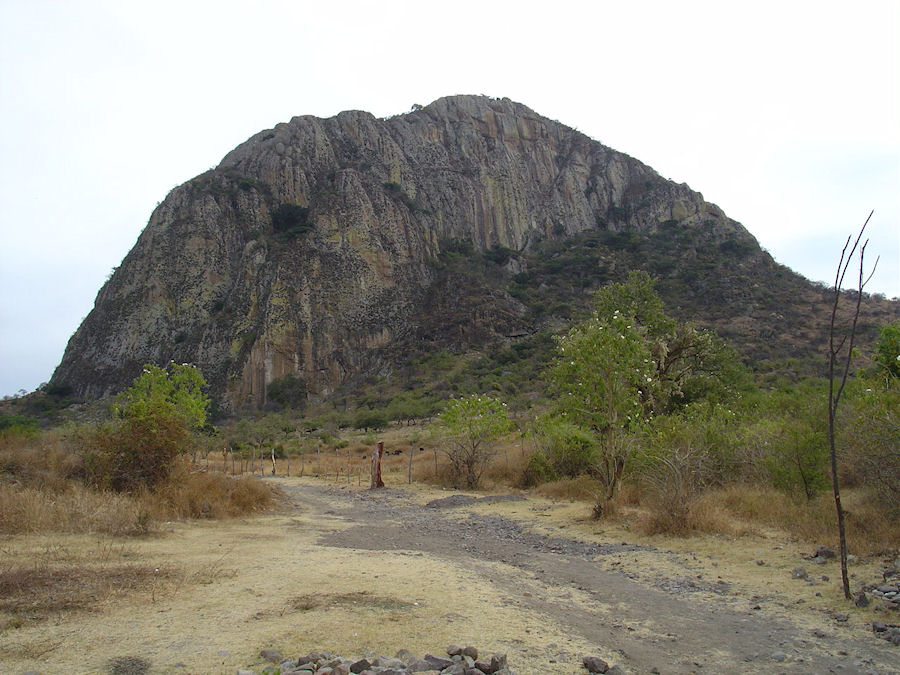 |
| Tree Morning Glory, Ipomoea arborescens. Photo Taken At Chalcatzingo Tlahuica Archaeological Ruins. Morales, Mexico. January 14, 2004. |
|---|
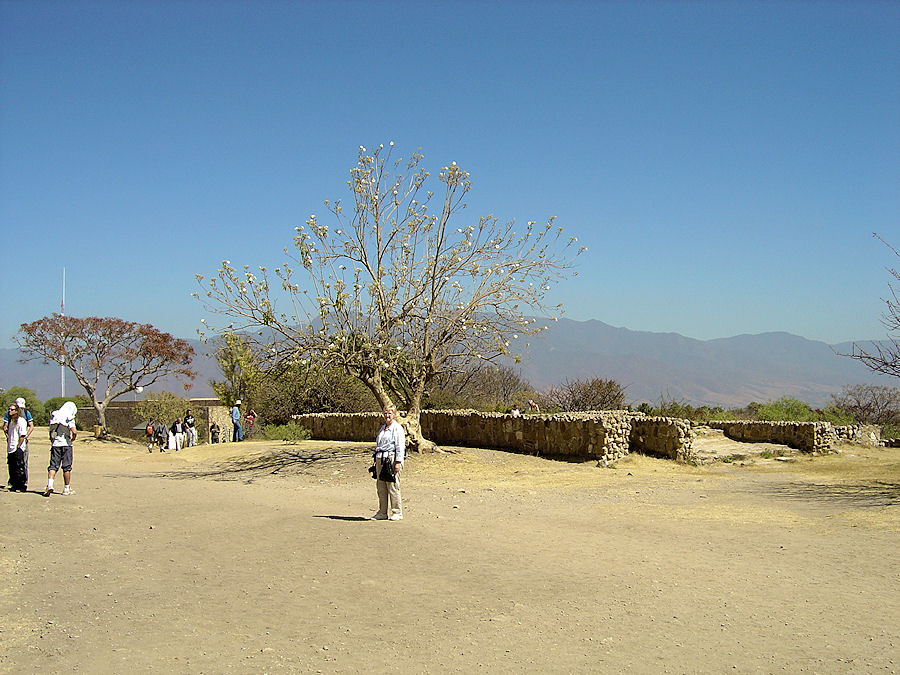 |
| Tree Morning Glory, Ipomoea arborescens. With Audrey Maxine DeLange. Photo Taken At Monte Alban Archaeological Ruins Near Oaxaca City. Oaxaca, Mexico. January 14, 2005. |
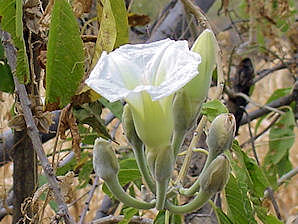 | 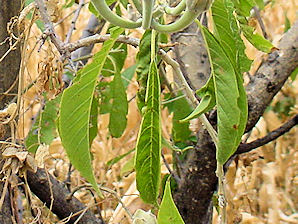 |
| Tree Morning Glory Flower. Ipomoea arborescens | Tree Morning Glory Leaves. Ipomoea arborescens |
|---|---|
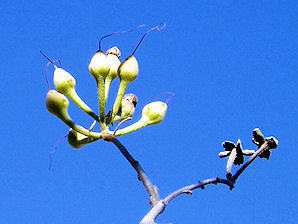 | 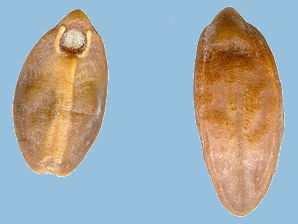 |
| Tree Morning Glory Seed Pods. Ipomoea arborescens | Tree Morning Glory Seeds. Ipomoea arborescens |
 /
/

Morning Glory Tree.
We wish to thank Wikipedia, the free encyclopedia for some of the information on this page. We share images and information with Wikipedia. Ipomoea arborescens is a Deciduous caudiciform tree, up to about 30 feet tall, with about a 24 feet spread. It is said to be a type of morning glory vine but, the species name arborescens describes it best. It means, becoming tree-like. The tree morning glory has 2 inches wide, cream colored flowers, blooming mostly in winter. Most flowers have yellow to brown orange throat centers.The flowers generally appear before the leaves, in from few- to many-flowered panicles. Another sub species; Ipomoea arborescens var. pachylutea Gentry (palo santo amarillo); grows at higher elevations than var. arborescens. It is found at the transition zone between a tropical deciduous forest and an oak woodland. It differs from the Ipomoea arborescens variety by having yellowish bark and harder wood, much larger and hairier leaves, and dark purple flower throats. The flowers of tree morning glories are major nectar sources for lesser long-nosed bats, hummingbirds, and probably bees. Deer feed on the abundant fallen flowers. Deer hunters in Mexico often wait where many flowers of tree morning glories are laying in order to get a deer. If you try to grow Morning Glory Trees; be aware that Morning Glory Trees which come in contact with the fungi Fusarium oxysporum can easily be infected by stem rot disease. During times of increased moisture or irrigation, the fungi releases spores that cause the stems of the plant to begin to swell, blocking needed nutrients from reaching other parts of the plant. Symptoms can include stunted growth, minimal flowering, yellow foliage and, when left untreated, death. We suggest using some of the selective fungicides which are available on the market to kill the fungus that causes stem rot before it has a chance to infect your plant. These special formulas are designed to leave your morning glory trees unharmed. These sprays are found at most local garden nurseries. Ipomoea arborescens is a fast grower. One person we know of had a plant for 2 years in a pot where it remained very small. She planted it in the ground and within 2 months it grew to be over 7 feet tall and 4 feet wide. Ipomoea arborescens seeds will usually germinate in 5-21 days, but even under good conditions, germination may be erratic. Sow the seeds about 6mm deep in a peaty seed sowing mix at about 20-30�C. Give it regular waterings in the summer, keep it drier in winter. Grows best in full sun. According to Mark Alan Dimmitt, Director of Natural History, Arizona-Sonora Desert Museum, Tucson, Arizona; the Tree morning glory is a common species in the tropical forests of southern Sonora. It ranges from northern Sonora southward into Michoac�n and Morelos. The fast-growing plants (2-3 meters/year) produce soft semisucculent stems. They are in leaf only during the brief summer rainy season. Foliage is shed soon after the rain stops in September, and flowering occurs from November to March. It is said that the tree morning glory is native of the state of Sonora in northwestern Mexico. It is deciduous and leafs back late in the spring, at the same time as the summer monsoon rains bring moisture to its normal habitat. With enough water and fertilizer in summer it grows fairly rapidly. The bark is light gray, and from a distance may appear to be white. The trunk of a large tree may feel cool to the touch. The wood is very soft, usually containing a high moisture content, which may appear "milky". After it is felled the wood will decompose into a rotten cardboard consistency within a matter of weeks due to the loss of its moisture. Under natural growing conditions, they usually are fairly wide spaced, about every 20 - 40 feet.
Quick Notes:
Height: Normally up to 30� tall (9 m), 24 feet spread (7 m). Twigs and foliage finely velvety-pubescent.
Flowers: 2 inches wide, epals oval, obtuse, � in. long, pubescent within and without, cream colored to white flowers, a few with dark red centers. Most are yellow to brown orange centers.
Blooming Time: November - March.
Seed Pod: Seeds brown, seed pods turn papery brown and are brittle.
Leaves: The leaves are broadly ovate, 3-8 cm long, green in color.
Stems/Trunks: Light gray, and from a distance may appear to be white. Two to 3 feet thick.
Found: Said to be native of Sonora in northwestern Mexico. But also found in other parts of Central Mexico; ie. Oaxaca.
Elevation: 0 to 7,000 feet.
Hardiness:
Soil pH requirements:
Sun Exposure:
Habitat: Chaparral, Creosote Bush Scrub, Coastal Sage Scrub, Riparian (rivers & creeks), and Central Oak Woodlands. Recommended Temperature Zone: USDA: 9b-12.
Miscellaneous: Photos Taken At Chalcatzingo Tlahuica Archaeological Ruins, Morales, Mexico. January 14, 2004. And at Monte Alban Archaeological Ruins Near Oaxaca City, Oaxaca, Mexico. January 14, 2005. This plant can not survive cold winter frost very well. It can be used in landscaping, only in the warmest areas of the Phoenix area. Even so protect it from frost periods in the area. We have this plant growing in Glendale, Arizona. A great xeriscape plant.
|
We Are Proud Of Our SafeSurf Rating!



We Are Proud Of Our SafeSurf Rating!
We Are Proud Of Our SafeSurf Rating!
Here Are Some Links To The Very Best & Most Popular Items Sold On Amazon.Com
To Learn More! Click The Links Below. No Obligation, Of Course!
| © 1966 - Present, Audrey, Eve, & George DeLange |

